The Chinese Paleolithic archaeology is marked by the long persistence of core-and-flake and cobble-tool industries. For the Chinese Paleolithic, wood and bamboo also served as raw materials for daily objects’ production.
People’s complexity and modernity have taken different paths in different regions of human transition- the study of the paleolithic cultures in every possible aspect of the origin of human evolution aids in getting a global perspective on human origins with detailed consideration.
The discoveries of China’s palaeolithic sites have also given insights and proof of people’s growing intellect and existence.
All hunter-gatherers across China in the palaeolithic era produced their stone artefacts through the traditional core-and-flake technique in the north by knapping flat river cobbles and various nodules.
In the south, they shaped cores, choppers, and flakes. In both regions, lithic assemblages demonstrate a rise in retouched flakes.
There are several correctly dated Palaeolithic sites in China, although the Chinese Paleolithic Chronocultural sequence is incomplete.
Here are the top ten palaeolithic sites in China.
10. Yuanmou County
Content
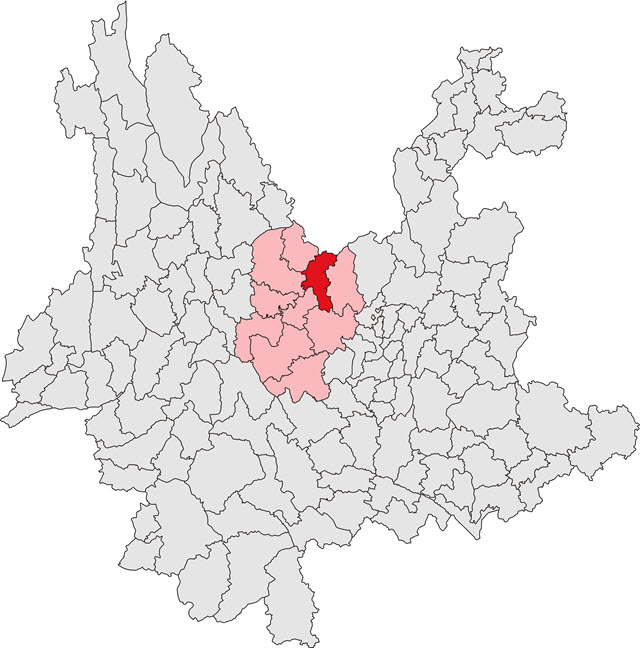
Source: Wikimedia Common
The Yuanmou County is located in Chuxiong Yi Autonomous Prefecture, Yunnan province. The discovery of the fossil teeth on May 1, 1965, labelled the famous Yuanmou Man here.
The site is also famous for its Tulin, which means earth forest. It is a natural landscape composed of earth columns or pillars, forming an immense forest.
Yuanmou has a unique landscape that was formed by geological movement and soil erosion two million years ago. It is named for its shape like the immense forest, and the main composition of the expansion is earth.[1]
9. Shangchen
Shangchen was named after the Shangchen village and is located in Yushan Town. The paleolithic archaeological site is on the cliff faces of a gully in the Loess Plateau.
The fossils of the Homo erectus, now called Lantian Man, were discovered here in 1964. The oldest fossil from the site, a skull, is determined to be 1.63 million years old.
Researchers also discovered stone tools buried deep in the side of a gully in Shangchen. Ninety-six stone tools have been found at Shangchen, including flakes, points, and cores. They were found in 17 artifact layers.
This ancient discovery is a long series of archaeological layers. With seventeen archaeological layers from roughly 1.4 million to 2.1 million years ago, Shangchen presents a more impressive record of the Chinese Loess Plateau’s habitation than any other Eurasia part.
8. Xihoudu
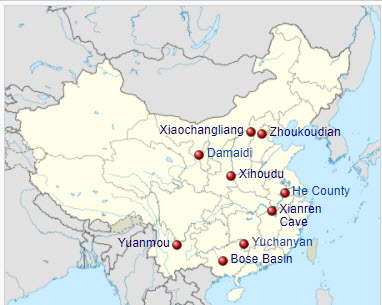
Source: Wikimedia Common
Xihoudu is located near Xihoudu Village in Ruicheng County, Shanxi Province. The early Paleolithic Age of China is traced from this site.
Two excavations were carried out here between 1961 and 1962. Cultural relics of stoneware, burnt bones, cut antlers and animal fossils, were discovered during the excavations.
Xihoudu is traced back to 1.8 million years ago and is the earliest Palaeolithic Age site in China. There were 32 stone implements found here, including chopping, scraping and three-edged pointed tools. The tools were constructed using flat stones like quartzite, gangue and lava.[2]
Twenty animal fossils were unearthed here. Fish and beaver fossils were some of them which suggested that the site contained a large body of water 1.8 million years ago. Moreover, most of the mammal fossils were grassland animals, indicating that Xihoudu once also had large grassland areas.
The Xihoudu Culture discovery places the Chinese Paleolithic Age in an earlier period, including the history of human beings’ fire.
7. Bose Basin

Bose Basin in Guangxi is known for bifacially and unifacially-worked Acheulean-like hand axes found in the same horizon with tektites. Making handaxes involves a sophisticated understanding of a rock’s material structure and mechanical properties.[3]
There is variability in the distribution of sites and artefacts across the basin. Bose Basin assemblages include cores, flakes, chunks, choppers and chopping tools, and picks which consist of quartzite and siltstone.
The size of all artefacts are large, and most of the tools are retouched on pebbles. The characteristics of these stone artefacts showed very strong ties with the pebble tool tradition of south China.
Researchers have also unearthed fossil teeth of mammal species in Bose Basin. These remains go back to 2 million years showing that early hominins and other large primates lived or passed through this region.[4]
6. Xiaochangliang
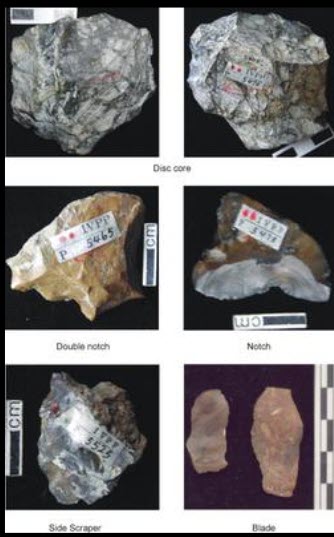
Xiaochangliang, located in the Nihewan Basin of North China, is a key archaeological locality for understanding early humans’ behavioural evolution. It is one of the earliest palaeolithic sites in Northeast Asia as well.[5]
Disc cores, notches, side and end scrapers were discovered in Xiaochangliang. It was first excavated in 1978. At the time they recovered 804 lithic artefacts from two site areas. However, the artefacts were not provenience in the field or well-described.
Xiaochangliang preserves an abundance of mammal fossils and stone tool assemblages in several of its localities. Early human activities are also well represented by tens of thousands of stone tool artefacts from this palaeolithic site.
5. Guanyindong
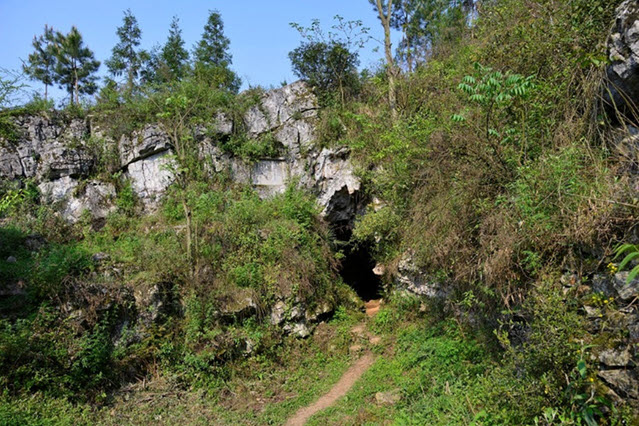
Early extensive excavations and descriptive studies say that the most stone tools have been excavated from Guanyindong Cave in the 1960s and 1970s, making it an important Paleolithic site in South China with its relatively large number.
The cave helped investigate Paleolithic hominin origins and evolution in China due to its rich findings composed of thousands of stone artefacts.
Archaeologists also discovered unique fauna with 23 species of mammalian fossils in the cave. However, no bones were found, making them difficult to identify what species of humans made the stone tools in the cave.
The toolmakers had similar skills to people living in the West at the same time. They independently discovered the Levallois strategy in China while people were making extensive use of it in Europe and Africa.[6]
4. Yuchanyan Cave
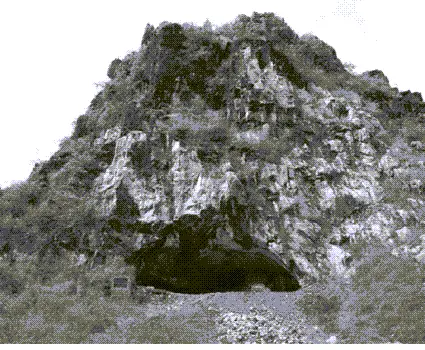
Yuchanyan cave in northern China is one of the oldest of a growing number of sites that support pottery origins. It occurred earlier in the Russian Far East and South China 20,000 years ago.
The cave floor is 100 square meters, 15m wide on its east-west axis and 8m wide on the north-south. It covers alternating layers of red clay and massive ash layers, representing deconstructed hearths, rather than clay vessels’ production.
The cave exhibited good preservation, resulting in the recovery of a rich archaeological assemblage of stone, bone, and shell tools and a wide variety of organic remains, including animal bone and plant remains.[7]
Stone tools recovered from the Yuchanyan cave include cutters, points, and scrapers. Polished bone awls and shovels, perforated shell ornaments with notched-tooth decorations also were found within the assemblages.
Plant species recovered from the cave’s deposits include wild grapes and plums. Several rice opal phytoliths and husks were identified, and some of the grains illustrate incipient domestication.
3. Xianren Cave
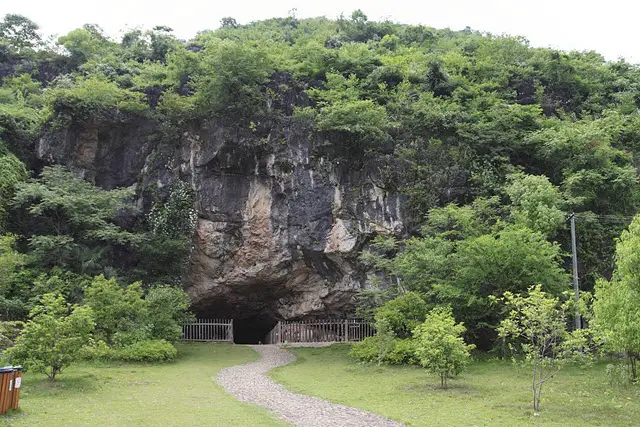
Source: Wikimedia Common
Hundreds of pottery fragments have been found since the 1960s in Xianren cave in south-east China’s Jiangxi province.
The Xianren (Immortal) Cave ruins (56m2), were also discovered at the riverside of Furong Town, Yongshun County in July 2008. Three stone-wares, two scrapers, a stone spike and two potsherds were found when archaeologists explored the cave.
There were no means of secure food storage before the invention of pottery. It introduced fundamental shifts in socio-symbolic behaviours and human subsistence practices.
The early pottery is believed to have been used by mobile foragers who hunted and gathered during the Late Glacial Maximum, the Ice Age’s high point. It was first made and used ten millennia or more before the emergence of agriculture.[8]
Human activities existed in the Xianren cave from the Upper Palaeolithic Period. The original inhabitants in Xiangxi created their culture characterized by fishing in the remote antiquity. The ancient fragments were excavated in the 1960s and again in the 1990s.
2. Damaidi

Damaidi is sited in the depth of Beishan Mountain of Zhongwei County, northwest of China’s Ningxia Hui Autonomous Region.
People painstakingly carved hundreds of petroglyphs of rich and varied subject matter, including mythological creatures, animals, symbolic designs, events and human figures thousands of years ago.[9]
A geologist discovered the ancient cliff carvings in Damaidi in 1988. The palaeolithic people made the mysterious markings and images on cliffs and boulders with stone or metal tools. The nomadic tribes who lived in northern China in the ancient times created exquisite rock art.
These primitive art carvings were communication efforts of the palaeolithic people. The tribal members could exchange messages or carry on their tradition from one generation to another through the petroglyphs.
Some experts recommend that the cliff carvings be moved to museums or buildings to prevent the area’s rich archaeology from being destroyed.
But it has many relics, and the large area of its rock art site makes it non-feasible to be moved. Researchers also want the local government to preserve the original site’s natural scenes and human landscape.
Damaidi covers an area of 15 square kilometres. It is the most ancient testimony of artistic creativity and human imaginative.
1. Zhoukoudian

Source: Wikimedia Common
Zhoukoudian, located at the south-west of Beijing, has the largest known collection of fossils of the extinct hominin Homo Erectus and forty incomplete skeletons, known as the Peking man fossils.
Peking man was technologically sophisticated. Stone scrapers, choppers and hand axes indicate that Peking man devised tools for their tasks.
The remains of anatomically modern humans had also been excavated in this site. The Zhoukoudian discoveries advanced the study of human evolution.[10]
Archaeologists uncovered complete skulls, leg bones, mandibles, teeth, and other fossils. The specimens were classified as Homo Erectus.
The site is a precious reminder of the prehistoric human societies in the Asian continent, that illustrates the human evolution process. It has a significant value in the reconstruction and research of early human history.
Conclusion
Palaeolithic sites have been discovered in China over the years that document the antiquity of human occupation. In association with early human remains, rich cultural inventories, tools, artecrafts and faunal inventories bear important implications for understanding Chinese prehistory and hominid evolution.
There is considerable variability in the lithic assemblages throughout the Pleistocene and the previously accepted diachronic change patterns for specific implements. For example, scrapers becoming smaller through time must be questioned for Chinese lithic assemblages. This inhomogeneity emphasizes in distinguishing a tripartite temporal division for the Palaeolithic on typological grounds.
China has limited distribution of Acheulian bifaces and unifaces. The palaeolithic assemblages are discovered in the Chinese sequence.
It is assumed to have limited applicable knapping techniques, but the appearance of microblade industries in the north in the Upper Paleolithic states otherwise.
Early pottery making started 20,000 years ago in the South of China. It emerged farming that brought the long tradition of cooking in China. Since the early twentieth century, prehistoric stone tools were recognized in China’s geological context while investigating river terraces or ancient lake beds.
The sites have discovered archaeological and human fossil materials recovered throughout China and mark the significance of pathological discoveries to study human evolution.
1. “The Relationship between Culture and Environment … – J-Stage.” https://www.jstage.jst.go.jp/article/jaqua1957/42/6/42_6_427/_pdf. Accessed 25 Jan. 2021.
2. “The Palaeolithic in Southern China – CORE.” https://core.ac.uk/download/pdf/5105282.pdf. Accessed 25 Jan. 2021.
3.”MOON factsheet tektites.” https://stfc.ukri.org/files/borrow-the-moon-factsheet/. Accessed 25 Jan. 2021.
4. “Early Hominin Evolution | CK-12 Foundation – FlexBooks® 2.0.” 19 Nov. 2018, https://flexbooks.ck12.org/cbook/ck-12-college-human-biology-flexbook-2.0/section/7.4/primary/lesson/early-hominin-evolution-chumbio. Accessed 25 Jan. 2021.
5. “The Lithic Assemblages of Xiaochangliang, Nihewan … – NCBI.” 20 May. 2016, https://www.ncbi.nlm.nih.gov/pmc/articles/PMC4874576/. Accessed 25 Jan. 2021.
6.”Toolstone constraints on knapping skill: Levallois … – CDN.” https://cpb-us-w2.wpmucdn.com/people.smu.edu/dist/f/584/files/2018/06/eren_etal2011_JAS.pdf. Accessed 25 Jan. 2021.
7. “Yuchanyan and The World’s Oldest Pottery » AsianARC | Blog ….” 3 Jun. 2009, https://www.bu.edu/asianarc/2009/06/03/yuchanyan-and-the-worlds-oldest-pottery/. Accessed 25 Jan. 2021.
8. “The Emergence of Early Pottery in East Asia: New … – CORE.” 15 Jan. 2020, https://core.ac.uk/download/pdf/286804622.pdf. Accessed 25 Jan. 2021.
9. “Distribution and Features of Rock Carvings in China.” https://pdfs.semanticscholar.org/8c0b/7683427d9a0c081a4efdea326d27a1f31b16.pdf. Accessed 25 Jan. 2021.
10.”Paleolithic Archaeology in China – Annual Reviews.” 2 Jul. 2012, https://www.annualreviews.org/doi/pdf/10.1146/annurev-anthro-092611-145832?cookieSet=1. Accessed 25 Jan. 2021.
